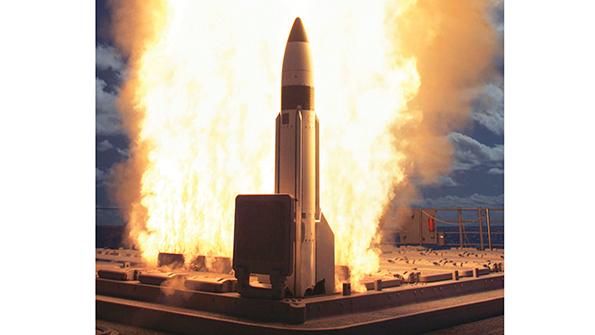DARPA Reveals Key Piece Of Future Hypersonic Interceptor

In order for a missile to shoot down another missile, the interceptor needs to be far more agile than the target. The physics of missile defense dictates that the agility margin for the interceptor design should be at least a factor of three, as measured in G forces. As missile defense coverage expands to hypersonic glide vehicles with the ability to swerve midair, new technology is necessary for the interceptors to keep up.
Since 2018, DARPA has been secretly working on an “enabling technology” for a new class of interceptors against hypersonic glide vehicles (HGV), such as China’s conventional DF-17 missile and Russia’s nuclear Avangard intercontinental ballistic missile. The nature of the threat likely demands an integrated solution, combining a portfolio of technologies to achieve the speed, range, precision and agility required for neutralizing HGVs.
- Aerojet Rocketdyne developing new technology
- New interceptor planned to enter service in late 2020s
Now, a senior DARPA official has revealed that a key ingredient of that package is in development by the agency’s Glide Breaker program: a new generation of divert and attitude control systems (DACS).
“If I want to do a hypersonic-bullet-to-hypersonic-bullet intercept, I need a divert and attitude control system that can pull three times the Gs as the guy coming in,” Michael Leahy, the director of DARPA’s Tactical Technology Office, tells Aviation Week. “That doesn’t exist. With the new capabilities and ways to be able to make that happen, [Glide Breaker will] be able to put it together.”
A DACS powerful enough to target HGVs is now in development by two competing teams: Aerojet Rocketdyne and Northrop Grumman. Both companies have received awards since 2020 from DARPA under the Glide Breaker program for the “development of a divert and attitude control system for use in a hypersonic defense kinetic-kill vehicle.” A subaward to Northrop identifies a requirement for a hybrid solid propellant, with the goal of developing a DACS compatible with safety standards for ships.
Meanwhile, other defense science and technology agencies continue to pursue alternatives to counter HGVs. The Office of Naval Research, for example, has revealed a concept showing a DDG-1000 destroyer launching a pair of SM-2-like interceptors featuring “multibody control” technology against an incoming HGV.
Northrop’s participation in Glide Breaker means the program also is an opportunity to expand the U.S. industrial base for DACS. Aerojet is now the U.S. military’s only source for the critical control system. Indeed, Aerojet’s grip on the domestic market for DACS has emerged as a key issue in the antitrust reviews of Lockheed’s proposed acquisition of the rocket and ramjet supplier—especially with the competition for the Next-Generation Interceptor contract underway.
The nature of the HGV threat implies that Glide Breaker will expand the performance envelope of DACS technology. Whereas Lockheed Martin’s Terminal High-Altitude Area Defense and Boeing’s Ground-Based Interceptor use a DACS to maneuver in the vacuum of space, a future HGV interceptor would use a DACS to bolster the performance of aerodynamic control surfaces in the thin atmosphere of 100,000-150,000-ft. altitudes. The key is to intercept the HGV in the glide phase, before the weapon can regain kinetic energy by entering a steep dive in its terminal phase almost directly above the target.
It remains unclear how soon the Glide Breaker technology could become available. The Missile Defense Agency is planning to introduce the Regional Glide-Phase Weapon System (RGPWS) on Navy ships in the late 2020s, leveraging new variants of existing interceptors. Lockheed has proposed a “Dart” variant of THAAD, and Raytheon has offered a “Hawk” version of the SM-3. Integrating Glide Breaker’s DACS in the RGPWS may dramatically improve the chances of glide-phase intercept attempts, but only if the technology is mature enough to enter production within about five years.
In the absence of a new DACS, the Hawk and Dart candidates for the RGPWS could rely on their existing maneuver devices, including DACS and aerodynamic control surfaces. In the past, missile defense officials have said that even a series of unsuccessful glide-phase intercepts against an HGV may help. The attempts could require the incoming HGV to maneuver aggressively, bleeding off some potential energy that otherwise would have been available to convert into kinetic energy in a terminal dive.
Editor's note: This article was updated to add information about the development of DACS powerful enough to target HGVs.







Comments
Anybody with any background in weapons development should know this ... not sure why DARPA doesn't.